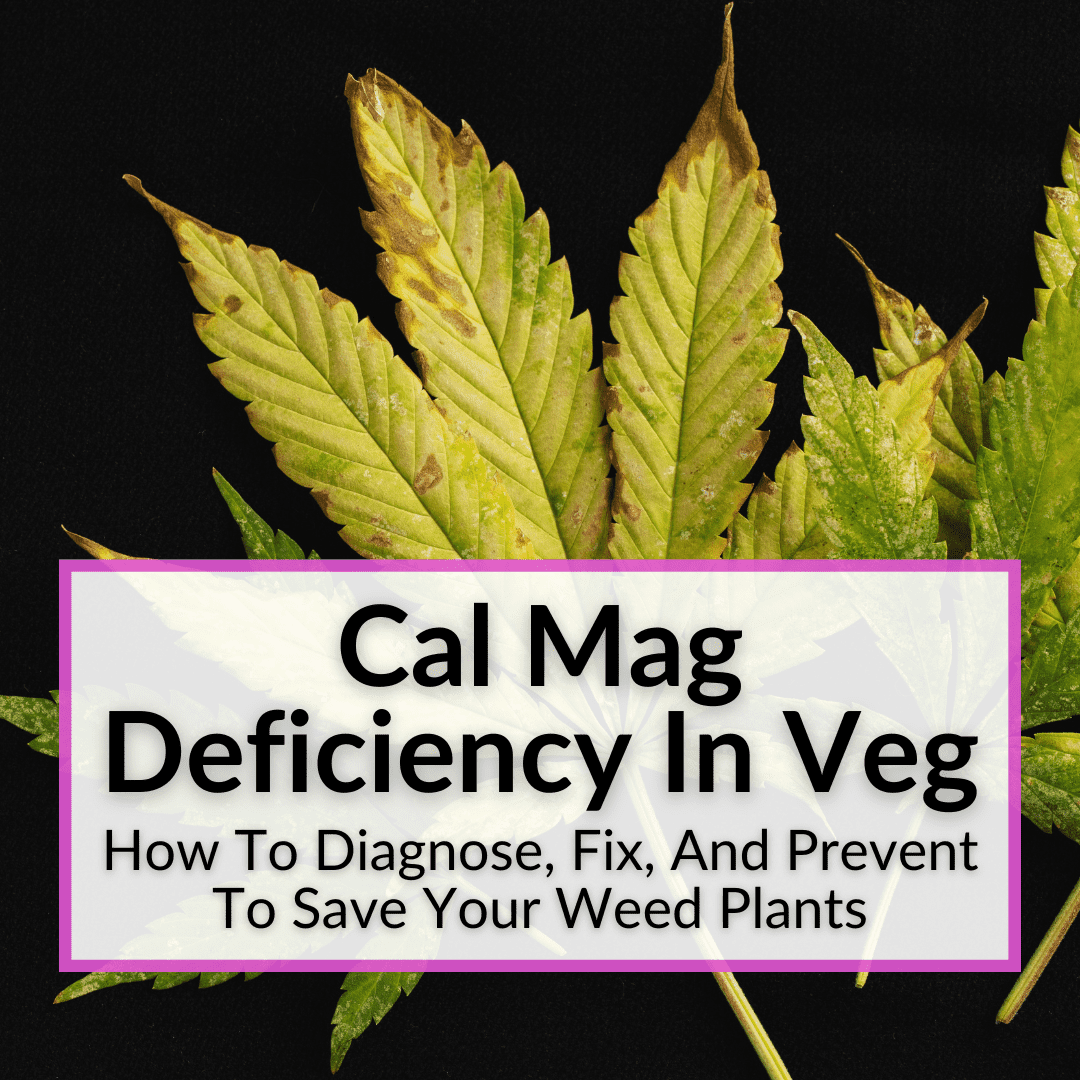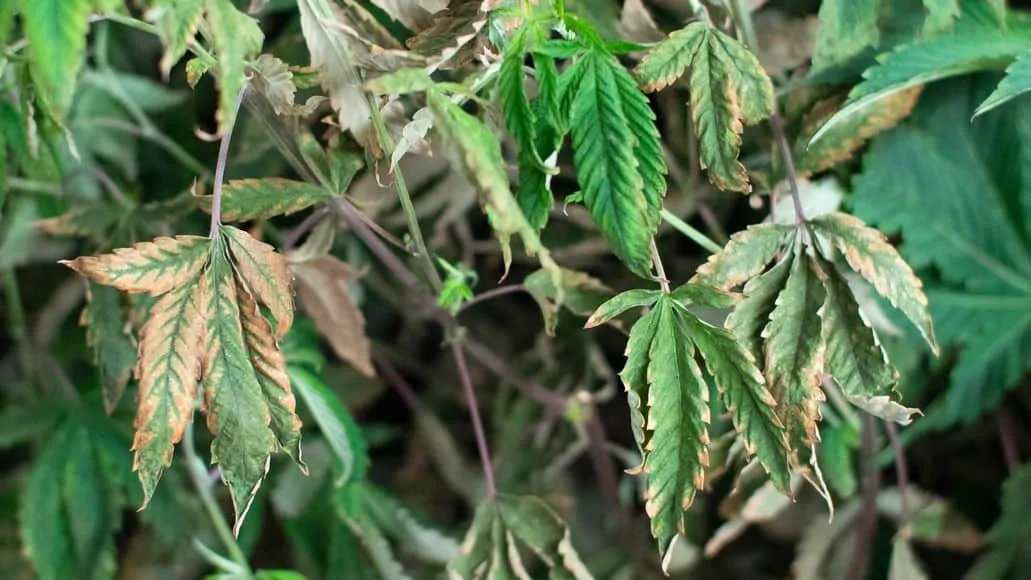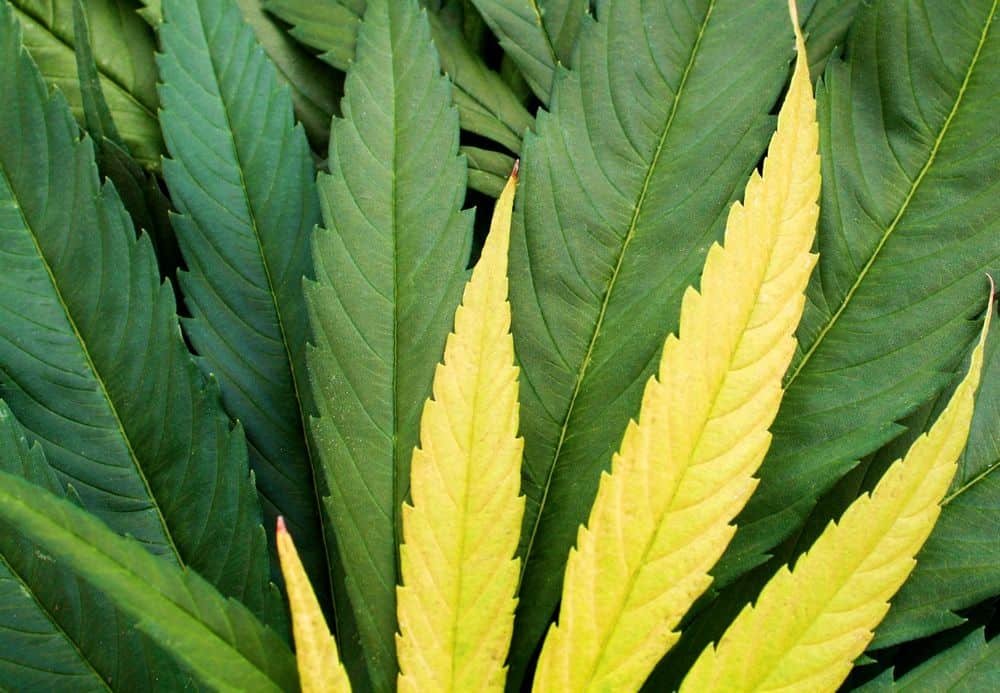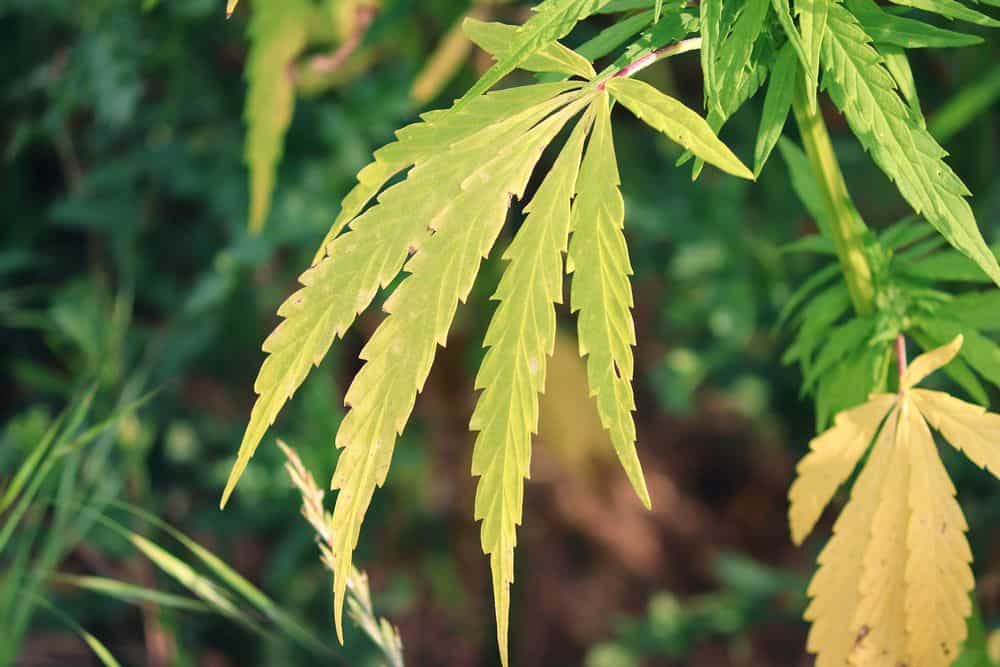 It’s a delicate balancing act.
It’s a delicate balancing act.
When growing cannabis, you need to ensure your plants get enough of all of the nutrients they need.
But not too much. Nutrient excess can be just as bad as a deficiency.
And if the soil pH is wrong, your plants may not be able to absorb nutrients at all!
It’s a lot. But a Cal Mag deficiency in veg is one of the more common issues, so we’re going to tackle that one today.
That way you have one less thing to worry about.
Keep reading to learn how to detect a Cal Mag deficiency in weed plants, how to fix it, and how to prevent it from happening in the first place, so you never have to deal with it again.
Contents
Cal Mag Deficiency In Vegging Weed Plants
Cal-Mag issues can strike at any time during the vegetative growth stage and can take a plant down in no time at all. But as long as you know what to look for, and how to get on top of the issue quickly, you can turn it around easily, completely without stunting growth.
We all know about the three main nutrients that all plants, including cannabis, need to prosper. These three are nitrogen (N), phosphorus (P), and potassium (K), and are referred to as the macronutrients.
These nutrients are usually supplied in the form of a fertilizer blend or powder solution, or come as part of the soil blend. But the list of nutrients that are absolutely imperative for cannabis plants to grow is much, much longer.

Your plants also need micronutrients. These are minerals and other compounds that, while not required in large quantities, can be just as important to the health of a cannabis plant. Chief among them are calcium and magnesium.
Calcium and magnesium deficiencies are the two of the most common nutrient issues that strike cannabis crops. This is particularly true for plants grown in coco-coir, but they can strike in soil and pure hydro setups with high frequency also.
Let’s dive in and have a look at how to identify and treat any cal-mag issues that you may run into while growing weed, and how to lower your chances of running into them in the first place.
How Calcium And Magnesium Affect Cannabis Growth
Now since we are talking about two separate nutrients, let’s quickly break down what each does and why they are important for cannabis plant development.
Calcium
While it not one of the three main nutrients, we cannot understate the importance of Calcium during the entire lifecycle. From the very beginning, cannabis plants need calcium to ensure proper germination and root development.
And is still a vital nutrient right up through the flowering period and to harvest. Its main function is in strengthening cell walls, but it is also essential for transpiration, photosynthesis, and nutrient uptake.
Magnesium
Magnesium is one of the nutrients that a weed plant needs in large concentrations throughout all growth stages and is imperative for a few key functions.
Found in its density in the fan and sugar leaves, it plays a vital role in photosynthesis by converting the sun’s energy into complex sugars, and in producing enzymes. As with calcium, it is also essential for nutrient uptake.
Signs Of Calcium And Magnesium Deficiency In Cannabis

Now let’s have a look at some of the visual indicators that can suggest a calcium or magnesium deficiency (or both) in your cannabis plants.
Signs Of A Magnesium Deficiency
First up, magnesium deficiencies will present with the following symptoms.
- Yellowing of the fan leaves, starting at the tips and working its way back towards the base of older leaf growth. It can also present as a lighter green, with the leaf veins staying a darker shade of green.
- Red or purple stems on weed plants are another telltale sign that magnesium is lacking, as well as browning leaf edges or necrotic spots appearing on fan and sugar leaves. If the leaves start to curl or get chewy and leathery in texture then this could also be a sign of either micronutrient deficiency.
- Magnesium is a bottom-to-top issue for cannabis, so the first signs will likely show on the oldest part of the plant.
Signs Of A Calcium Deficiency
For calcium issues, the signs can include the following.
- Calcium is a top-down deficiency, meaning that it starts in the newer growth and works its way down if unchecked.
- New leaves show signs of curling, and twisting, and can simply die off as soon as it appears. They can be either yellow or even purple in color.
- Large, light rusty colored spots may appear. The leaf edges may also turn a little dry and crispy.
- Growth is severely slowed, and the branches and stems become much weaker than in healthy plants.
How To Treat Cal-Mag Issues

If you think your cannabis plants may be suffering from calcium or magnesium deficiency, then the first step is to make sure that they are receiving enough of the other macro and micronutrients.
If everything else looks good, then you may need to supplement them with a Cal-Mag additive to your watering schedule or by feeding it directly. There are a bunch of cal-mag boosters on the market, with almost every single large nutrient company stocking one.
This article has our recommendation for a good Cal Mag supplement. It’s in the section on magnesium.
The problem could also be pH related. If you are feeding your plant with water that is not in the correct pH range, or if the pH of the medium itself is out of whack, then the plant will not be able to uptake nutrients properly.
For soil cultivation, make sure the pH range is between 6.0 and 7.0, and for hydro or coco you want it between 5.5 and 6.5.
Preventing Cal-Mag Issues
Cal-mag issues are much more common with coco-coir cultivation than with soil or pure hydro. Learn more about the differences in growing marijuana in soil vs coco coir.
Coco-coir contains positively charged ions, otherwise known as cations. These cations can and will bond to both calcium and magnesium, making them unavailable for plant uptake.
This is one of the only true downsides of coco as a medium, but you can easily remedy it by adding a little cal-mag solution to the feed water throughout the entire grow.
For soil cultivation, you can look at using dolomitic lime or garden lime in your watering schedule, which will also help with pH stabilization at the root zone.
You can also use a regular cal-mag booster when growing in soil, or in pure hydro setups. Just make sure you follow the bottle instructions. Providing too much of any nutrient can be just as bad as not providing enough.
Using reverse osmosis or soft water is another sure fire way of bringing on cal-mag issues for your crop.
If you are using RO water, or the tap water in your area is particularly soft, keep a keen eye out for any cal-mag deficiency signs. It might be best to just add a little cal-mag to your water.
Cal Mag Deficiency In Weed Plants During Veg: Final Thoughts
A Cal Mag deficiency in veg is a common problem. Luckily, it is easy to solve. The hardest part is recognizing the issue in the first place. Once you have done that, the rest is easy.
Even easier is taking the right precautions to prevent a cal mag deficiency in your weed plants to begin with. Follow our tips above and yo will hopefully never have to deal with this issue again.
Leave a Reply